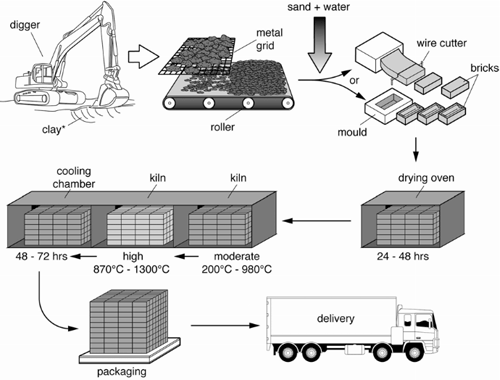The diagram below shows the process by which bricks are manufactured for the building industry. Summarise the information by selecting and reporting the main features, and make comparisons where relevant.

Model answer by Lifestyle Training Centre
The provided process diagram intricately outlines the multifaceted steps the building industry undertakes in order to produce bricks.
The overall process comprises three stages; the initial procurement of raw materials, the actual production phase, and finally, packing and delivering the end product.
The entire process is initiated with the excavation of clay using a digger. A metal grid filters the clay, and a roller moves the fine clay for mixing, where the clay is blended with sand and water. Bricks are made at this stage through the utilisation of either a wire cutter or a mould. The bricks are then sent to an oven for drying.
After 24 to 48 hours of baking in the drying oven, the bricks undergo further processing in a kiln; first, at temperatures ranging from 200 to 980 degrees Celsius followed by high temperatures ranging from 870 to 1300 degrees Celsius. Once the baking is finished, the bricks are cooled down in a chamber for 2 to 3 days. After cooling, the bricks are packed and delivered in a truck.
(word count: 175)

Pingback: IELTS Process diagram questions and answers | Lifestyle Training Centre®